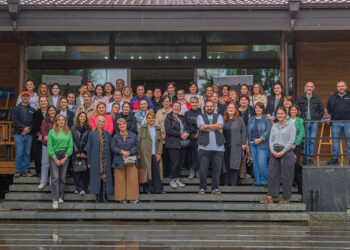A state of emergency has been declared in Engels, a western Russian city, following a drone strike by Ukraine on a Russian oil base located approximately 600 kilometers from the frontline. The Ukrainian government confirmed that the attack targeted the Kristall oil base, which has been supplying fuel to Moscow’s bomber planes. Ukrainian officials explained that this strike aimed to reduce Russia’s ability to strike Ukrainian positions, while also creating logistical difficulties for Russian strategic aviation.
Ukraine’s presidential adviser, Oleksandr Kamyshin, stated that the attack was carried out using long-range Ukrainian-made capabilities. Roman Busargin, the regional governor, reported that both Engels and the neighboring Saratov city were subjected to a large-scale drone attack, which resulted in a fire at an industrial site. Fortunately, no casualties have been reported as a result of the strike. Busargin did not confirm whether the Engels airbase itself was targeted in the attack.
This assault on Russian oil infrastructure is viewed as part of Ukraine’s ongoing efforts to weaken Russia’s warfighting capacity, especially targeting critical resources. The move aligns with Ukraine’s broader strategy to disrupt Russian military operations from a distance, even as heavy fighting continues along the frontlines.
Zaporizhzhia Missile Attack Claims Lives
The southern Ukrainian city of Zaporizhzhia was the target of a Russian missile strike on January 8, 2025, resulting in at least 13 civilian deaths and around 30 injuries. Footage shared by Ukrainian President Volodymyr Zelensky on his Telegram channel shows civilians lying on the streets amidst rubble, with emergency responders rushing to provide assistance and evacuate the injured. The attack, which occurred in the afternoon, involved glide bombs launched by Russian forces. At least two bombs struck residential buildings, causing widespread destruction in the area.
Regional Governor Ivan Fedorov had warned earlier in the day that the Zaporizhzhia region was at risk of high-speed missile attacks, and the warning proved to be accurate. Zelensky condemned the aerial bombing, calling it “the cruelest act” and stressing the need for international pressure on Russia. “The protection of lives in Ukraine must be supported,” he said, emphasizing that only through strength could a lasting peace be achieved.
Russian Territory Expansion Continues
A recent war tracker update revealed that Russian forces captured an additional 0.5% of Ukrainian territory in 2024. This brings Russia’s total control to approximately 18.14% of Ukraine’s territory, including the Crimean Peninsula and parts of the Donetsk and Luhansk regions that were already occupied by Russian troops before the 2022 invasion.
The report also highlighted that much of the Russian territorial gains in 2024 were concentrated in eastern and southern Ukraine, where fighting has remained intense. The war tracker noted that while Russia’s territorial advances have slowed in recent months, Moscow’s forces continue to solidify their control in key regions. Meanwhile, Ukrainian forces have been engaged in counteroffensives, attempting to reclaim lost ground in areas that are strategically significant to both sides.
This steady loss of territory has contributed to the ongoing humanitarian crisis in Ukraine, with millions of civilians displaced and many regions suffering from the ongoing conflict. As the war approaches its third year, both Ukrainian and Russian forces are bracing for further escalation, particularly in the face of continued international pressure and military support.
Compiled by Ana Dumbadze














